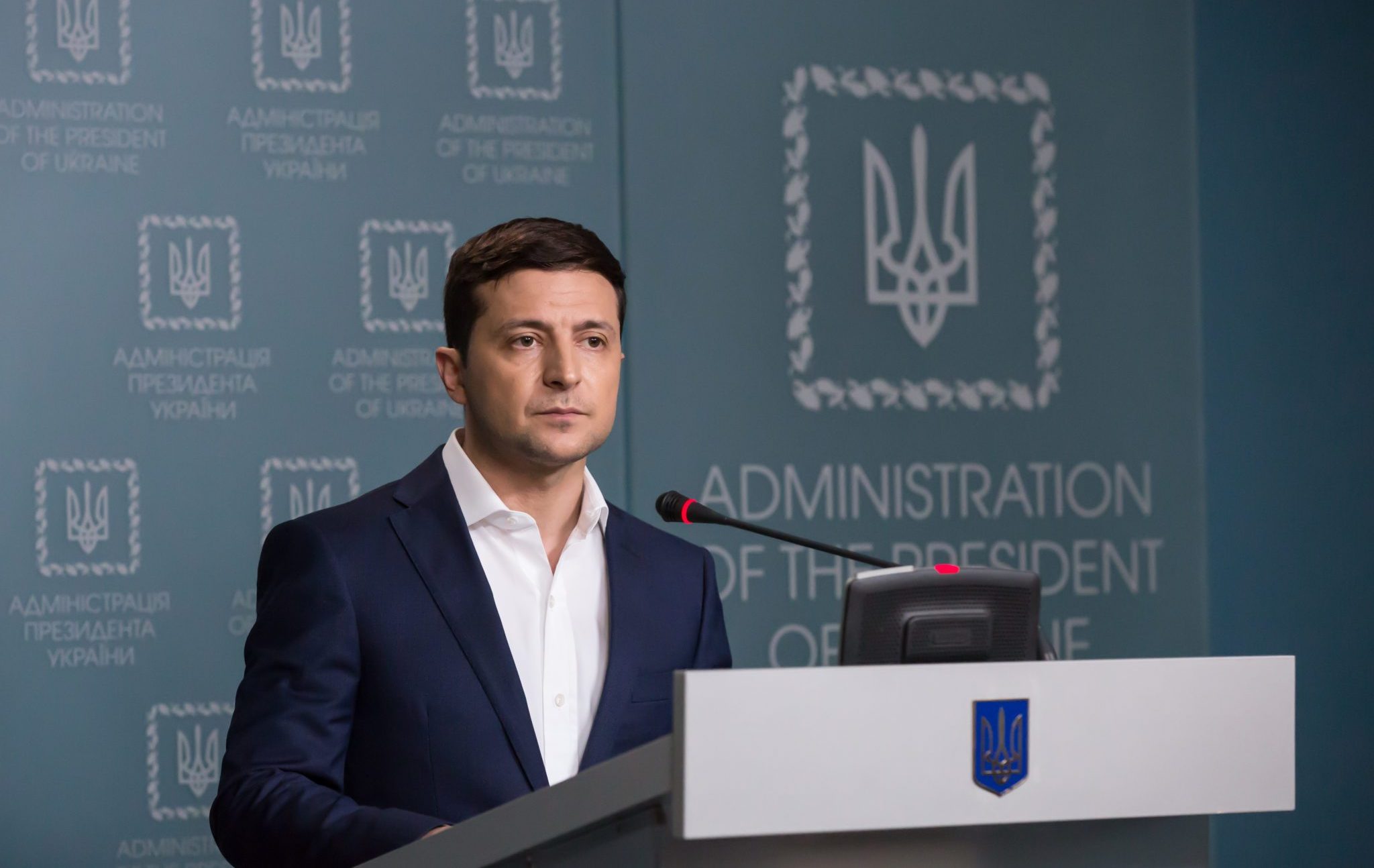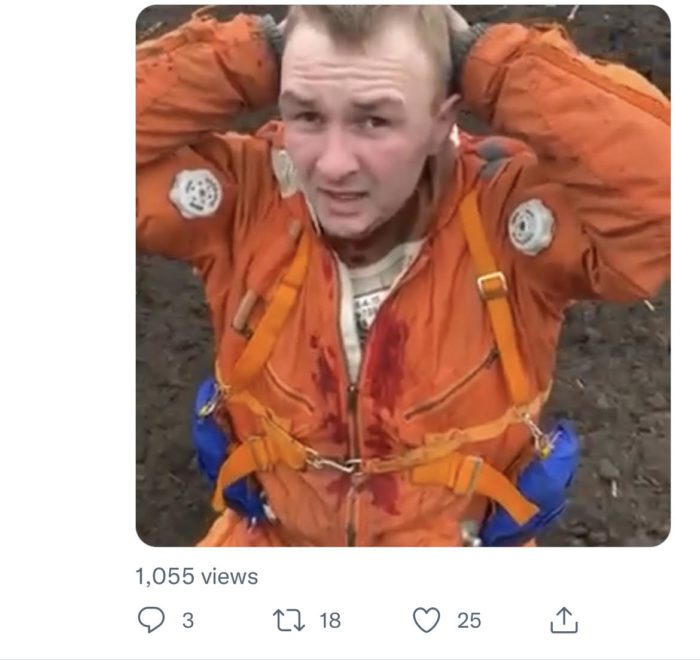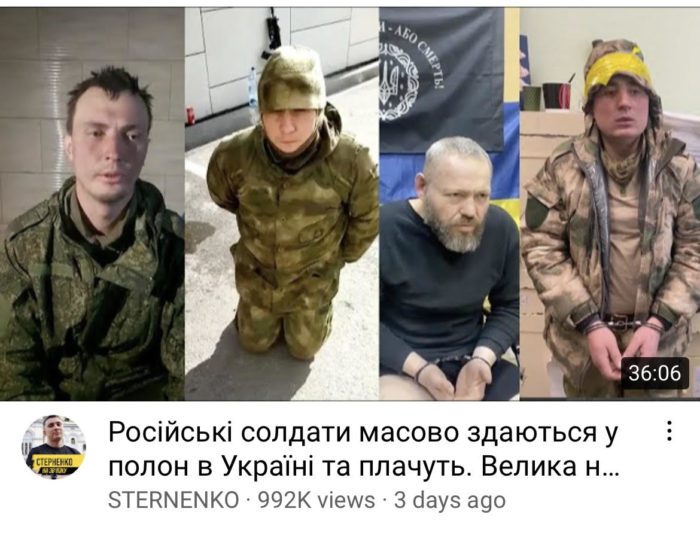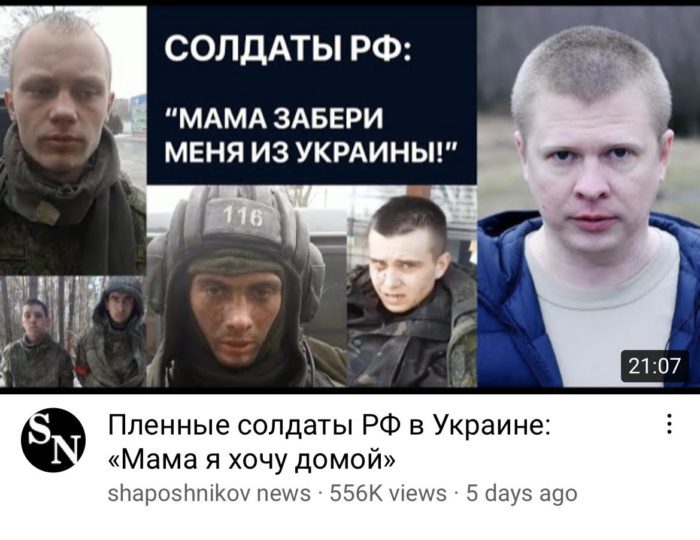The Information War in Ukraine

Whatever makes a soldier sad
Will make a killer smile.
—Leonard Cohen
Russia is invading Ukraine, and the Ukrainian army is fighting bravely. But should the American public immediately confer the “good guy” status on a country that’s being invaded? Considering Ukraine’s unprecedented request for a NATO-enforced no-fly zone, which if conceded would lead to a shooting war between two nuclear powers with the real chance of nuclear warheads falling on the heads of American children, even an invaded country should come under intense scrutiny.
One way a fighting force demonstrates superiority of character is by humane treatment of prisoners of war, those entirely at their mercy and whom they presumably hate. Ukraine is not passing that test.
In recent weeks, pro-Ukraine English language social media influencers circulated a video designed to reach foreign audiences, purporting to show a Russian soldier in Ukrainian captivity. I have no knowledge of what went into the production of that video, only that it exists and that it appears to be intended for Western eyes and that the response to it was overwhelmingly positive. The soldier was shown surrounded by what appeared to be a group of Ukrainian civilians, giving him tea and pastries as they asked him questions. It ended with a mafioso request for the soldier’s mother to come and get him.
Whoever produced the footage evidently thought he was showcasing Ukrainian hospitality, and Western outlets that lauded the interaction apparently agreed. But what I saw is a country that is not ready for NATO. Prisoner propaganda of this kind is forbidden by the Geneva Convention. Moreover, having seen far worse images of POWs that were intended strictly for the Russo-Ukrainian audiences, I detect manipulation.
One of these other Russian-language videos also made it to Western social media, purportedly showing a captured Russian pilot in orange uniform kneeling with his hands behind his head. The Slavic internet is filled with similar images: soldiers kneeling, soldiers handcuffed. I’ve seen film of a soldier interrogated on his hospital bed and another one of a captive talking to the camera with his pants removed to show the wound on his thigh. Another shows a purported soldier calling home with what appears to be plastic wrap around his eyes. Prisoners are being asked to repent; prisoners allege they didn’t know that they were in Ukraine.

The rationale behind the publication of these images is obvious: The display of emasculated Russian soldiers sends a clear message to Russian audiences—“Don’t even try”—while lifting the morale of the Ukrainian people. From what I can tell, I was probably the only person appalled by them. These pictures and videos are plentiful; they have been widely circulated by Ukrainian sources, some of them reused by content creators multiple times.

Russian prisoner media are not limited to amateur operations. Videos alleging to show a Russian soldier and a Russian officer in conversation with their families were posted on the Facebook page of Ukrainian Special Forces Command. Ukrainian TV channel 1+1 aired a full segment on Russian prisoners. The channel belongs to the Ukrainian oligarch Igor Kolomoisky.
Ukrainian politics is full of what can euphemistically be called “colorful characters,” and Kolomoisky is one of them. The 1+1 channel was the same that originally aired Volodymyr Zelensky’s comedy show Servant of the People, in which he played a Ukrainian President. Kolomoisky was Zelensky’s chief backer during his presidential campaign, when the latter ran as the anti-war and anti-corruption candidate.
In 2010, the European Jewish Congress accused Kolomoisky of hostile takeover when the mobster crowned himself its president. To their enormous credit, the organization found a way to push him out in 2011. Three years later, following the Euromaidan overthrow of President Victor Yanukovich, Kolomoisky sided with Ukrainian nationalists against Russia. I can see it from his point of view: In Russia, the oligarchs are subordinate to Putin, but Ukrainian politics are more chaotic and regionalized. There he can be in charge.
Calling himself jidobandera (‘jid’ is a pejorative for Jew, and Bandera is the name of the World War II-era Ukrainian fascist whose followers slaughtered Jews and Poles, sometimes colluding with the Wehrmacht and sometimes on their own), the oligarch, appointed the governor of the Dnipropetrovsk Region, organized a nationalist militia into the Dnipro Battalion. Amnesty International accused the group of blocking humanitarian aid at one point, and the U.N. implicated them in numerous war crimes. Kolomoisky also assisted in the creation of several other armed factions, including the notorious neo-Nazi Azov Battalion, which has been incorporated into the Ukrainian National Guard.
While obviously not all Ukrainian forces are Azov neo-Nazis, that is an awfully low bar for an army auditioning for NATO. And the ubiquity of prisoner videos should also be a point of concern. Barbaric attitudes towards POWs are not merely widespread, they are systemic. Consider that shortly after the “Ukrainian hospitality” video surfaced, the Ukrainian Special Forces Command broadcasted its intent to violate the Geneva Convention: “From now on, there will be no captured Russian artillery. No mercy, no ‘please don’t kill, I surrender’ will be getting away. Call your mom one last time.” The post, which also called to slaughter Russian soldiers “like pigs,” was later deleted.
Shortly after the onset of war, the Ukrainian Ministry of Internal Affairs established a site called ищи своих, or search for your relations, with pictures of what is alleged to be dead and captured Russian fighters. It includes films of soldiers under interrogation as well as the names of those who “could be” dead. Russia blocked the site, but the Ministry’s Telegram channel continues to publish the content to which Russian audiences respond with their disgust. The enterprise is billed as a humanitarian effort to inform soldiers’ relatives of their fate.

Of course, many might ask, “What about Russia?” Russia, too, has aired prisoner propaganda, most famously the recording of the surrender of Snake Island defendants who, as many Ukrainians still believe, were said to be killed after saying “Go f— yourself, Russian ship.” Comparison between the two enemies shows that Russia and Ukraine are very much alike.
That is a problem for Ukraine. It needs to present itself not as a Russian country, but as a modern European one, the kind that fights with honor and dignity. In fact, after some of the POW media made its way to the West, Ukrainian presidential advisor Oleksii Arestovych called on his countrymen to stop taking and posting images of the Russian captives, noting, “We are a European army of a European nation. Don’t be like Satan.” Satan? No word yet on whether Ukraine will investigate the multiple incidents and prosecute the wrongdoers.

Considering that the Ukrainian army trained with NATO, their soldiers must have been briefed about civilized military behavior. While one might counter that war destroys norms and that it is easy for comfortable people an ocean away to judge, other countries, such as Israel, have shown they can fight for their very survival while seeking peace and maintaining rules. POW propaganda like Ukraine’s would be unacceptable to the Israeli public. In recent memory, our own country had the Abu Ghraib scandal, but Abu Ghraib was precisely that, a scandal, and a huge one, turning public opinion on the war. The military personnel that made the horrific pictures of those prisoners knew to keep their activities secret. They weren’t cheerfully passed on from one social media account to another.
In World War II, Joseph Stalin marched German POWs into the heart of Russia, parading them in front of the Soviet people and making propaganda films about how well they were treated. Of course, most of them were put in labor camps, overworked, and malnourished. Hundreds of thousands of them died. Ukraine’s digital parade of Russian POWs betrays some of the same mentality, and while we may wish Ukrainian defense forces well, that should give us pause. More importantly, considering positive reactions to some of these materials in the U.S. and spreading anti-Russian sentiment, uncritical identification with the Ukrainians may open a back door for new barbarism here at home.
Katya Sedgwick is a writer in the San Francisco Bay area. You can follow her on Twitter @KatyaSedgwick.